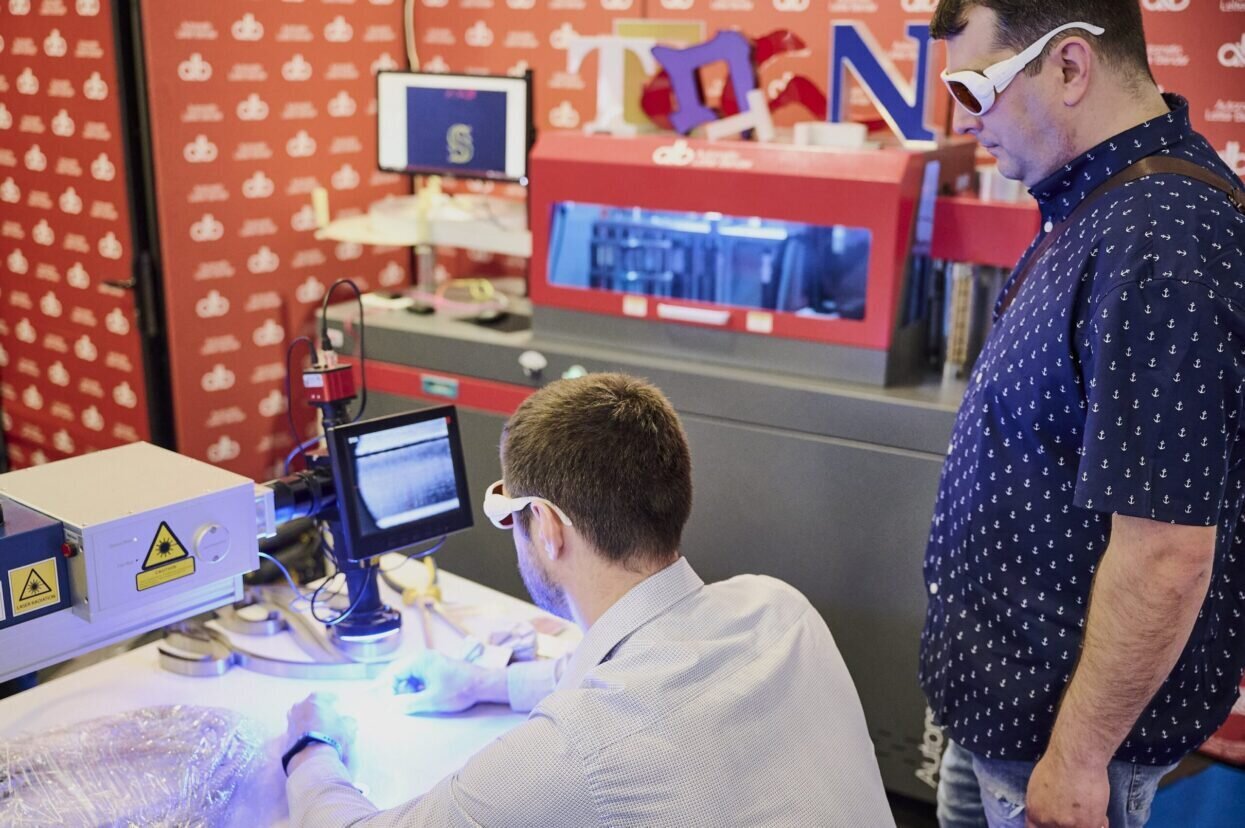
FESPA’s Michael Ryan, Head of Global Print Expo shares the latest trends within the signage industry as well as the current challenges and opportunities that sign makers face. Michael speaks to Paul Lovelock, Managing Director at DMA Signs and James Mavi, Sales & Marketing Director at branding solutions expert Astley.
In less than three months we’ll be opening the doors to European Sign Expo 2024 at the RAI, Amsterdam, The Netherlands, from 19 to 22 March 2024.
But what can delegates expect, what are the key trends driving the signage and visual communications sector and what opportunities and challenges are sign makers currently facing? These are the questions answered in conversation with UK-based sign makers Paul Lovelock, Managing Director at DMA Signs and James Mavi, Sales & Marketing Director at branding solutions expert Astley.
What, in your opinion, are the biggest trends in signage at the moment?
Paul Lovelock: We’ve really noticed a big uptake in recycled, recyclable and reusable substrates for signage, so we’ve been putting a lot of our efforts into researching and developing new techniques to print on eco substrates and with eco inks. We’re doing a lot of this research in-house and it’s been great, if sometimes challenging, to be able to work with new and non-conventional materials to meet our customers’ demands for more environmentally friendly signage.
James Mavi: Yes, sustainability is one of the hottest topics in our industry right now and we’ve also been getting a lot of requests for more environmentally friendly alternatives. We believe that there’s an opportunity for growth by offering sustainable solutions to clients and leading the way for more innovation in this area. As more products are coming to market at a competitive price, it’s now easier for our customers to incorporate this type of eco-friendly signage.
Paul Lovelock: Digital signage is another growth market worth exploring, from our perspective. Coming out of the pandemic, I think a lot of signage companies struggled as their offering was so specialised to a specific application, industry or use. There’s a huge opportunity to diversify and learn – don’t rely on just one customer or application.
James Mavi: We’re also continuing to see a big move towards digital signage, but rather than replacing more traditional products, a lot of our customers are asking for digital to complement their existing signage, which enables increased flexibility and control for our clients.
Integration of new technology into physical environments is also definitely a growth area, so whether it’s VR experiences triggered via QR codes or the use of digital hardware to display messaging, this continues to be a rapidly growing area within our industry.
Which challenges are your customers currently facing?
Paul Lovelock: The opportunities brought on by the rising demand for sustainability create the challenge of finding more eco-friendly solutions without extra cost. Our customers want more sustainability without having to pay more, so we need to find processes and ways of working that are still profitable for us.
James Mavi: Like the rest of us, our clients are feeling the impact of the cost-of-living crisis as their customers are spending less. Therefore, it’s become more important than ever to create experiential environments to sell products and capture footfall.

What is your perspective on the signage industry and what do you think are the key opportunities sign makers can capitalise on?
Paul Lovelock: The signage industry is very healthy at the moment and I think collaboration between sign makers is playing a big part in this. We’re no longer working in silos competing with each other, but trying to work together for the overall good of the industry. I think this synergy between companies is helping us all be more flexible and adaptable. There’s a real opportunity to broaden your scope of work and explore new sectors and materials for business growth.
James Mavi: The print and signage industry has had to develop so much in response to the pandemic, but it has always been a sector that responded quickly to suit consumer trends. One of our core strategies is to help our clients support their brand with the latest developments within their own individual sectors. This means ensuring we identify opportunities and offer innovation as part of our partnership with them. It’s an exciting landscape to be a part of at the moment and we’re looking forward to seeing what comes next!
European Sign Expo 2024 will highlight the latest trends and solutions in signage and visual communications. As of January 2024, we’re already looking to welcome over 80 exhibitors and suppliers, including Cosign, Domino Sign, EFKA, BaltLED, NAVORI, Sign Agent and more, who will help sign makers discover how they can capitalise on new technologies and products in channel lettering, digital signage, dimensional signage, engraving and etching, LED and sign solutions, and advise them on how to convert these into business growth opportunities.
Co-located with European Sign Expo, is FESPA Global Print Expo, highlighting a range of solutions and materials for wide format, digital, screen and textile printing; Personalisation Experience, giving visitors insight into the business growth opportunities made possible with personalisation; and Sportswear Pro, where delegates can explore the latest products and solutions in textile and sportswear manufacturing and decoration.
We’re inviting sign makers and visual communications specialists to join us in Amsterdam at European Sign Expo 2024, to gain a new outlook on industry trends and future opportunities.
To find out more and register, visit here. Register before 19th February and save €30 on your entry with code ESEM404. We look forward to seeing you there!